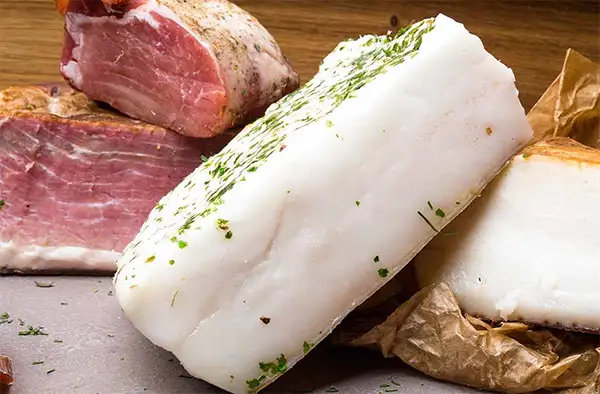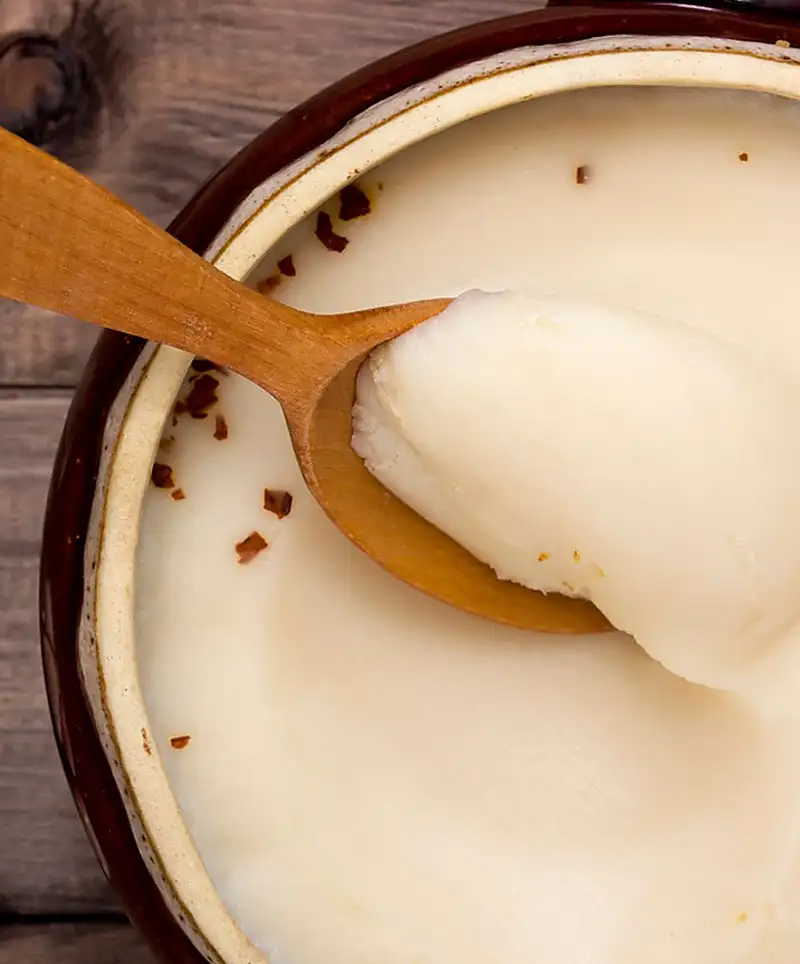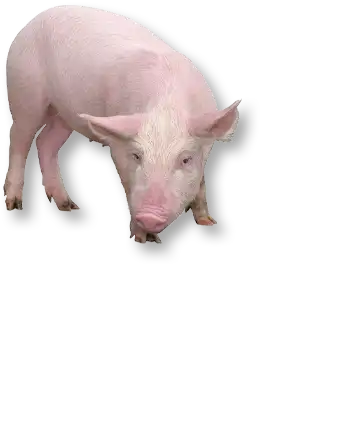A Slippery Slope of Fun and Flavor!
Let's talk about the long-forgotten hero of the culinary world – lard! Yes, you read that right. In a world where olive oil gets a standing ovation and butter is practically worshipped, lard quietly sizzles in the background, waiting for its moment of glory. Often overlooked and unjustly maligned, this traditional fat is making a triumphant return, and rightly so. Lard, with its rich history and unique flavor profile, is a true champion in kitchens around the globe. It's not just a relic of bygone days but a testament to timeless cooking techniques. From flaky pie crusts to mouth-watering roasts, lard has been the secret behind countless culinary masterpieces. So, put aside those trendy oils and spreads for a day. It's National Lard Day, and it's time to grease up your pans, tie on your aprons, and celebrate this culinary powerhouse in all its greasy glory! Let's rediscover the joys of cooking with lard and give it the ovation it deserves.
A Brief, and Slightly Greasy, History
National Lard Day, observed annually, isn't just an occasion to sing praises for lard; it's a day steeped in history, acknowledging lard's significant, albeit slippery, role in our culinary past. This celebration takes us back to a time when every part of the animal was valued and nothing went to waste. Our ancestors, with their resourceful and practical approach to food, recognized the worth of lard as more than just a cooking fat; it was a staple of survival and sustenance.
The journey of lard is a fascinating tale that spans centuries and continents. From the rustic farmhouses of medieval Europe to the bustling kitchens of early American settlers, lard has been a cornerstone in cooking. Its versatility and high smoking point made it an ideal choice for a variety of dishes, infusing meals with a depth of flavor that other fats couldn't match. Those Sunday roasts, the centerpiece of family gatherings, owed their succulent taste to lard, and the pastries - oh, the pastries! - were nothing short of culinary alchemy, with lard turning simple flour into flaky, golden treasures.
Moreover, lard was not just confined to the realm of cooking. It found its way into the creation of soap, candles, and even as a lubricant for machinery. This multi-purpose fat was a symbol of ingenuity and practicality.
But the story of lard is also one of changing perceptions. There was a time when lard fell out of favor, overshadowed by the rise of vegetable oils and a growing health consciousness. However, in recent years, we've witnessed a renaissance of this traditional fat, as chefs and home cooks alike have begun to embrace its rich flavor and cooking properties once again.
National Lard Day, therefore, is a nod to this rich history. It's a day to reflect on how our food practices have evolved, to appreciate the wisdom of our forebears, and to celebrate the return of lard to its rightful place in the modern culinary lexicon. As we celebrate this day, we're not just enjoying a delicious ingredient; we're participating in a tradition that has been an integral part of human culinary evolution.
The Lard Comeback
For years, lard was the culinary world's equivalent of the leather-jacket-wearing rebel, lingering on the outskirts of kitchen popularity. It was passed over in favor of its trendier, leaner cousins like olive oil and avocado oil, who were busy hogging the spotlight (pun intended). Lard was the Danny Zuko of fats, misunderstood and labeled as 'bad news.' But, just like in every great 50s musical, our hero was due for a dazzling turnaround.
 Enter the lard renaissance! Like a seasoned actor making a triumphant return to the stage, lard is back and showing everyone what they've been missing. Top chefs and savvy home cooks are now singing its praises, lauding its rich, full-bodied flavor that turns everyday dishes into Michelin-star-worthy creations. Those once-snubbed tubs of lard are now taking center stage in gourmet kitchens, proving that sometimes, the bad boy really does win.
Enter the lard renaissance! Like a seasoned actor making a triumphant return to the stage, lard is back and showing everyone what they've been missing. Top chefs and savvy home cooks are now singing its praises, lauding its rich, full-bodied flavor that turns everyday dishes into Michelin-star-worthy creations. Those once-snubbed tubs of lard are now taking center stage in gourmet kitchens, proving that sometimes, the bad boy really does win.
This comeback is not just about taste, though. In our eco-conscious, nose-to-tail eating era, lard fits in like a dream. It's the poster child for sustainable cooking - a big win for the 'use every part of the animal' philosophy. After all, why let anything go to waste when it can be transformed into something delicious? It’s like giving the pig a standing ovation for its contribution to our culinary adventures.
Moreover, lard is busting out some smooth moves in the health department too. The once-demonized fat is now getting nods of approval for its balanced composition. Who knew that this bad boy had a heart of gold?
Lard's comeback is a delicious plot twist in the culinary narrative. It's a story of redemption, sustainability, and, of course, mouth-watering flavors. So here's to lard, the once-rebellious fat that’s now dancing its way back into our hearts and our frying pans. Watch out, olive oil – there's a new (well, technically old) sheriff in town!
Health Benefits - Yes, You Read That Correctly
Before you give lard the cold shoulder as a fast track to Clogsville, it's time to sift through the greasy myths for some clear, heart-friendly facts. Lard, often cast as the culinary villain, is actually strutting some nutritional stuff that might just raise your eyebrows (and not your cholesterol as much as you'd think).
First, let's talk about the saturated fat showdown. The assumption is that lard must be brimming with it, but here's the twist: lard has less saturated fat than butter. That's right, in the great fat face-off, lard is not the heavyweight champ. It's more like the surprisingly nimble boxer who's been misunderstood all along.
Now, onto the good fats – monounsaturated fats, to be precise. These are the fats that nutritionists and health gurus sing praises about, and lard is joining this healthy chorus. High in monounsaturated fats, lard is not just sitting at the health table; it's bringing something valuable to it. These fats are the heart's pals, known for their role in maintaining good cholesterol levels.
But wait, there's more! Lard steps into the health spotlight, free from the artificial trans fats that haunt many of its processed relatives. While trans fats have been shown the red card for their not-so-great health impacts, lard sits comfortably on the sidelines, naturally free of these unwelcome additives.
So, as National Lard Day rolls around, you can indulge a bit more freely, knowing that lard isn't the dietary villain it's been made out to be. It's more like the misunderstood character who's had a bad rap but is actually kind of good for you, at least more than you might have thought.
How to Celebrate - A Grease-Inspired Festivity
- Cook Up a Storm: National Lard Day is the perfect excuse to try out those old family recipes. Think pies with flaky crusts, crispy fried chicken, or even homemade tortillas.
- Lard Tasting Party: Yes, it's a thing. Gather various types of lard (who knew there were so many?) and have a tasting. Pair it with wine for an extra classy touch.
- Educational Fun: Host a trivia night with lard-based facts. Did you know that lard was once used as a body ointment? Talk about multi-purpose!
- Lardy Art: For the more creatively inclined, why not try your hand at lard sculpting? It's like ice sculpting but, well, greasier.
National Lard Day isn't just about celebrating a cooking fat; it's about embracing our culinary heritage, challenging modern misconceptions, and enjoying some darn good food. So, let's raise our forks to lard – the underdog of the fat world, deliciously making its mark one dish at a time!
Please Share our Content






 Enter the lard renaissance! Like a seasoned actor making a triumphant return to the stage, lard is back and showing everyone what they've been missing. Top chefs and savvy home cooks are now singing its praises, lauding its rich, full-bodied flavor that turns everyday dishes into Michelin-star-worthy creations. Those once-snubbed tubs of lard are now taking center stage in gourmet kitchens, proving that sometimes, the bad boy really does win.
Enter the lard renaissance! Like a seasoned actor making a triumphant return to the stage, lard is back and showing everyone what they've been missing. Top chefs and savvy home cooks are now singing its praises, lauding its rich, full-bodied flavor that turns everyday dishes into Michelin-star-worthy creations. Those once-snubbed tubs of lard are now taking center stage in gourmet kitchens, proving that sometimes, the bad boy really does win.








 "Sláinte!" is a traditional Irish expression used as a toast, equivalent to "Cheers!" in English.
"Sláinte!" is a traditional Irish expression used as a toast, equivalent to "Cheers!" in English.